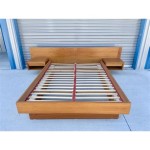Building Raised Beds on a Slope
Creating a garden on a slope can present unique challenges. Soil erosion, uneven watering, and difficult access can make traditional gardening methods less effective. Raised beds offer a solution to these problems, providing a stable growing area and enhancing accessibility. This article will guide you through the process of building raised beds on a slope, addressing key considerations and techniques for successful construction.
Planning and Design
Before starting construction, careful planning is essential. Consider the following factors:
Slope Inclination:
A gentle slope (less than 15%) may allow for traditional rectangular beds. For steeper slopes, terraces or stepped beds are better suited. Determine the slope's angle and adjust your designs accordingly.Sunlight Exposure:
The slope's orientation will determine how much sunlight your raised beds receive. Favor south-facing slopes for maximum sunlight, adjusting bed placement to ensure adequate exposure for the chosen plants.Soil Type:
Assess the existing soil's composition and drainage properties. Amend the soil with compost or other organic matter to improve fertility and drainage.Bed Size and Shape:
Consider the dimensions of your garden and the types of plants you intend to grow. Raised beds can be various shapes, from rectangular to curved, allowing for flexibility in design.Construction Techniques
Once you have a plan, choose construction materials suitable for your needs and budget. Common options include:
Wood:
Treated lumber is durable and resistant to rot but may contain chemicals. Untreated cedar or redwood are more environmentally friendly options but can be more expensive.Stone:
Natural stone provides a rustic aesthetic and lasting durability. Stone beds require more labor and specialized construction techniques.Metal:
Steel or galvanized metal can be durable and affordable. Consider corrosion resistance when choosing metal materials.Concrete Blocks:
Concrete blocks are strong and long-lasting, offering a more structured look. They can be built using mortar or stacked without mortar for simpler construction.Adapting to Slopes:
Terraces:
For steeper slopes, build terraces by creating level platforms along the contour lines. This stabilizes the soil and prevents erosion.Stepped Beds:
Create a series of staggered beds, each with a retaining wall to hold back soil. This design allows for easier access and creates a visually appealing pattern.Retaining Walls:
Construct retaining walls using stone, wood, or concrete to support the soil and prevent slippage. Ensure they are adequately anchored and built to withstand the weight of the soil and plants.Building a Raised Bed on a Slope
To build a raised bed on a slope, follow these general steps:
1.
Mark and Measure:
Determine the bed's location, size, and shape. Use stakes and string to mark the outline.2.
Excavate the Area:
Remove soil and debris within the marked area to create a flat base for your raised bed.3.
Construct the Base:
Build the base structure using your chosen material. For wood, consider using pressure-treated lumber or cedar for longevity. For stone, create a stable foundation with mortar.4.
Install the Soil:
Fill the raised bed with a quality soil mix that drains well. Consider adding compost, peat moss, or other amendments to improve fertility and water retention.5.
Stabilize the Structure:
For steeper slopes, use additional supports to create a secure and stable raised bed. This may involve adding more retaining walls or using tie-downs to secure the structure.6.
Drainage:
Ensure adequate drainage to prevent soil saturation and root rot. Consider adding drainage holes to the bottom of the raised bed or creating a slope to facilitate water runoff.7.
Planting:
Once the raised bed is constructed, plant your desired vegetables, herbs, or flowers.Building raised beds on a slope offers advantages in terms of soil management, accessibility, and erosion control. By following these planning, construction, and maintenance guidelines, you can create a thriving garden on even the most challenging terrain.

How To Build An Organic Raised Bed On A Sloped Yard Deeply Southern Home

How To Build An Organic Raised Bed On A Sloped Yard Deeply Southern Home

Building A Terraced Garden On Hill Tejas Farm

Raised Bed Vegetable Garden On A Slope Gardening Healthy Alyona

How To Make Raised Garden Bed In Slope Area Step By Idea For Beginners Gardening Nitha Kitchen

How To Build An Organic Raised Bed On A Sloped Yard Deeply Southern Home

Raised Bed Vegetable Garden On A Slope Gardening Healthy Alyona

How To Build Raised Garden Beds On A Slope

Building Raised Beds Down A Slope Fenced In Garden Area Part 3

How To Build An Organic Raised Bed On A Sloped Yard Deeply Southern Home
Related Posts







